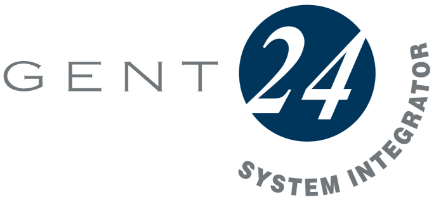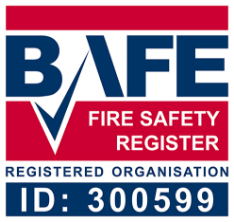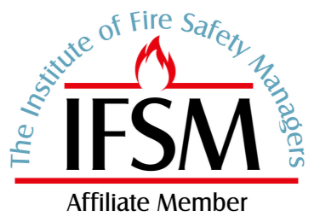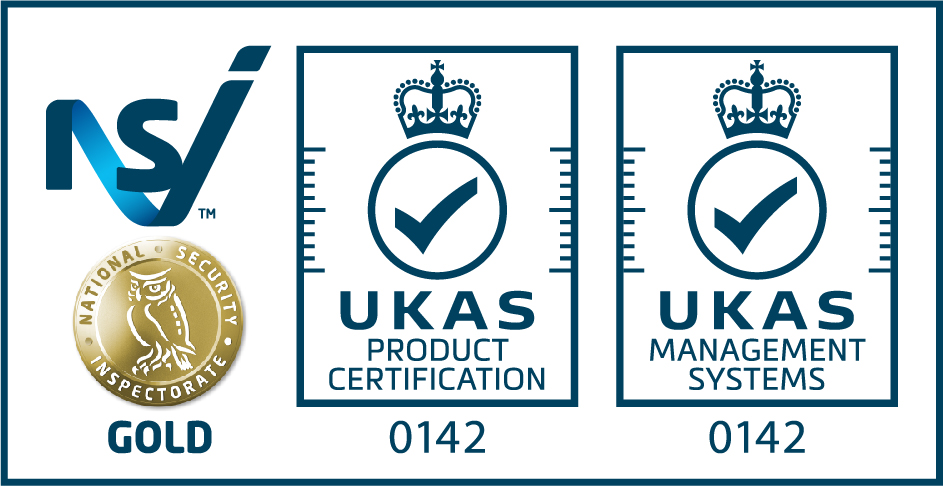In 2025, the safety of our buildings faces new and evolving threats. Fires can start unexpectedly, putting both lives and property at risk. The need for robust fire life safety systems has never been more urgent.
This essential guide will demystify fire life safety systems, highlighting the latest technologies, updated compliance standards, and practical steps for keeping your premises secure. We will explore the core components, discuss critical regulatory changes, and provide clear advice on maintenance and system upgrades.
By understanding and investing in modern fire life safety systems, you protect not only people but also your business and assets. Now is the time to assess your current measures and take action to ensure your building is fully prepared.
Understanding Fire Life Safety Systems in 2025
Fire life safety systems are evolving rapidly as buildings become more complex and regulations tighten. In 2025, understanding these systems is essential for protecting people, property, and business operations.
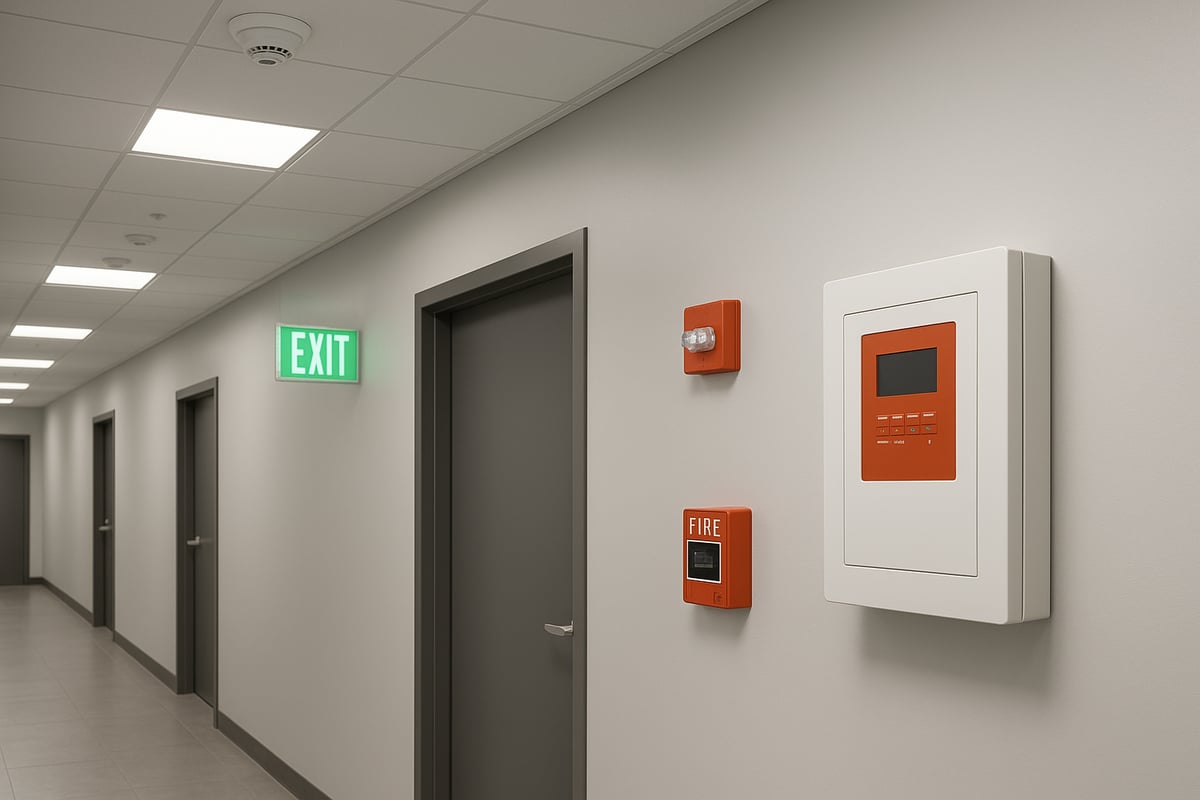
What Are Fire Life Safety Systems?
Fire life safety systems are integrated networks designed to detect, alert, suppress, and support safe evacuation during fire emergencies. Their core objective is to protect life, reduce property damage, and maintain business continuity.
Key components of fire life safety systems include:
- Smoke and heat detectors
- Fire alarm panels and manual call points
- Sprinkler systems and gas suppression units
- Emergency lighting and illuminated exit signs
- Voice alarm and public address systems
These systems are critical in commercial offices, public venues, and residential buildings alike. For example, smoke detectors provide early warning, sprinklers help control flames, and emergency lighting guides occupants to safety. Fire life safety systems work together to ensure that, when seconds matter, everyone can escape quickly and safely.
Why They Matter in 2025
In 2025, fire life safety systems are more important than ever due to rising building complexity and increased occupancy levels. Modern architecture often features open spaces, mixed-use developments, and advanced materials, all of which demand sophisticated safety solutions.
Legal requirements have grown stricter, with insurance companies closely examining system compliance before issuing policies. For example, the Regulatory Reform (Fire Safety) Order 2005 remains in force, but new rules are coming into effect, especially with the PSTN switchover. According to UK Fire and Rescue Services, working fire alarms can reduce fatalities by up to 50 percent.
A real-world example is the integration of fire life safety systems with wider security platforms in large facilities. This approach enables faster detection, coordinated evacuation, and improved outcomes for both occupants and responders.
Key Regulatory Changes and Compliance
The regulatory landscape for fire life safety systems is changing in 2025. New or updated UK fire safety rules are coming into force, affecting all types of buildings. The transition from analogue PSTN to digital communications impacts legacy alarm signalling, which must be upgraded to maintain compliance and reliability.
British Standards, including BS 5839 for fire alarms and BS 5266 for emergency lighting, have new revisions focusing on digital integration, testing, and maintenance. Building owners and managers are now legally responsible for ensuring systems meet these standards, with mandatory maintenance and detailed record-keeping required.
Non-compliance can lead to substantial fines, invalidated insurance, and even prosecution. For example, penalties have been issued for failing to maintain fire alarms or emergency lighting. For a full overview of these changes, see the UK fire safety regulation updates 2025.
Staying informed and proactive with fire life safety systems ensures not only legal compliance but also the safety and confidence of everyone in the building.
Core Components of Modern Fire Life Safety Systems
Modern fire life safety systems are built from several key components working together to protect lives and property. Each element is designed to detect threats early, respond rapidly, and ensure safe evacuation. Understanding these core parts is essential for compliance and effective risk management in 2025.
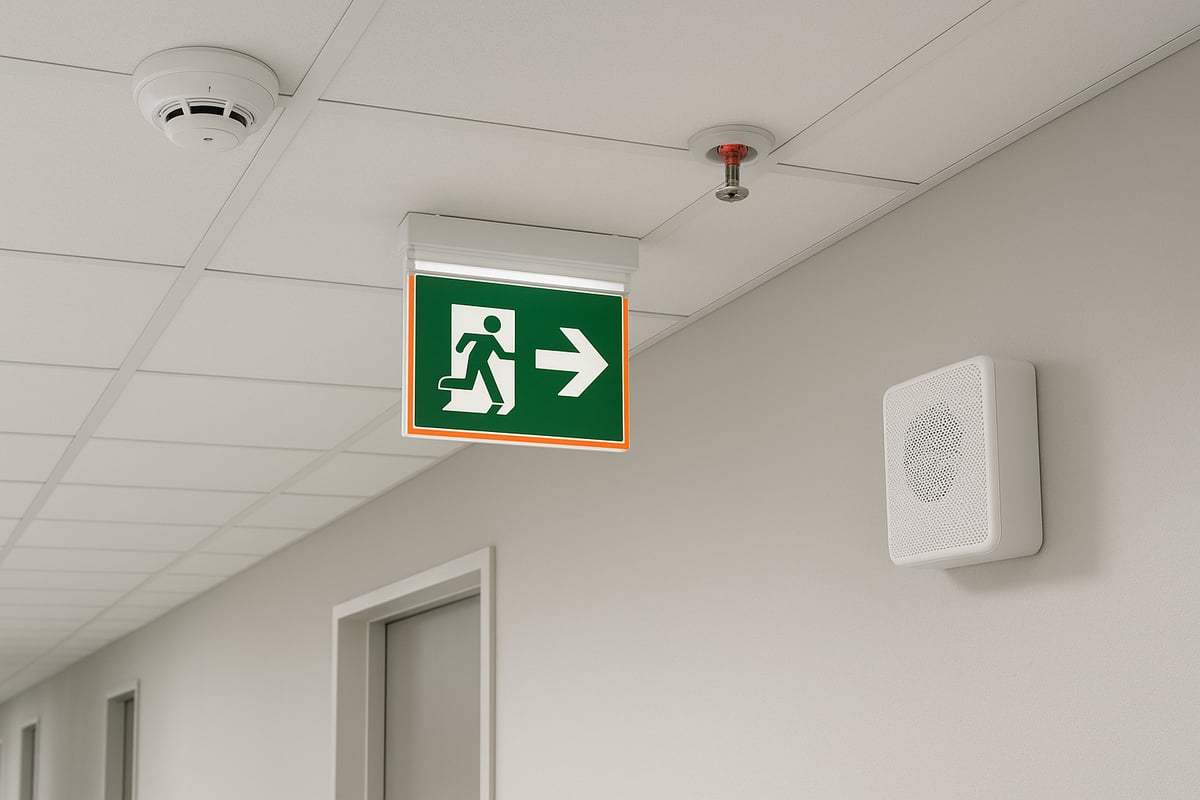
Fire Detection & Alarm Systems
At the heart of fire life safety systems are advanced detection and alarm solutions. These include smoke and heat detectors, each tailored for specific environments. Smoke detectors are ideal for most areas, while heat detectors suit kitchens or garages.
Manual call points let occupants trigger alarms if they spot danger before sensors do. Systems are either addressable, allowing precise location tracking of incidents, or conventional, which groups zones for simpler setups. Wireless options offer flexibility, especially in heritage or complex buildings.
Early warning is vital in high occupancy spaces. For a detailed breakdown of system types and benefits, see the Fire Alarm System Overview. The right detection and alarm setup forms the backbone of effective fire life safety systems.
Fire Suppression & Extinguishing Systems
Suppression is a critical layer of defence in fire life safety systems. Sprinkler systems come in wet, dry, and pre-action varieties. Wet systems are standard in most buildings, while dry and pre-action are used where freezing or accidental discharge is a concern.
Gas suppression, essential for data centres and server rooms, uses inert or chemical agents to avoid water damage. Portable extinguishers are classified by the type of fire they tackle, such as A for solids, B for liquids, and C for gases.
Automatic activation ensures rapid response, but manual extinguishers remain vital for immediate action. Gas suppression systems, for instance, protect critical infrastructure where even brief downtime is costly. Each solution is chosen based on the specific fire risks present in the building.
Emergency Lighting & Exit Signage
Emergency lighting and exit signage guide occupants safely during power failures. These elements are crucial for effective fire life safety systems, ensuring visibility along escape routes, stairwells, and exits.
Placement must comply with BS 5266 standards, which require minimum illumination times. A 90-minute duration is standard, giving ample time for evacuation even in complex buildings.
Clear, well-lit signage reduces confusion and supports orderly movement. Ensuring regular checks and maintenance keeps these systems reliable when most needed.
Voice Alarm & Public Address Systems
Voice alarm and public address systems deliver clear, calm instructions during emergencies. In large or noisy environments, such as shopping centres or stadiums, traditional alarms may go unnoticed or cause panic.
Integration with fire alarm systems allows automated, situation-specific messaging. This reduces confusion and helps direct people to the safest exits.
For example, these systems are invaluable in venues where quick, coordinated evacuation is essential. Modern fire life safety systems use voice alarms to enhance communication and improve overall safety.
Integration and Emerging Technologies in 2025
The rapid evolution of building technology is reshaping fire life safety systems in 2025. Modern solutions now centre on integration, smart monitoring, and advanced communication, ensuring greater protection and compliance for all types of properties.
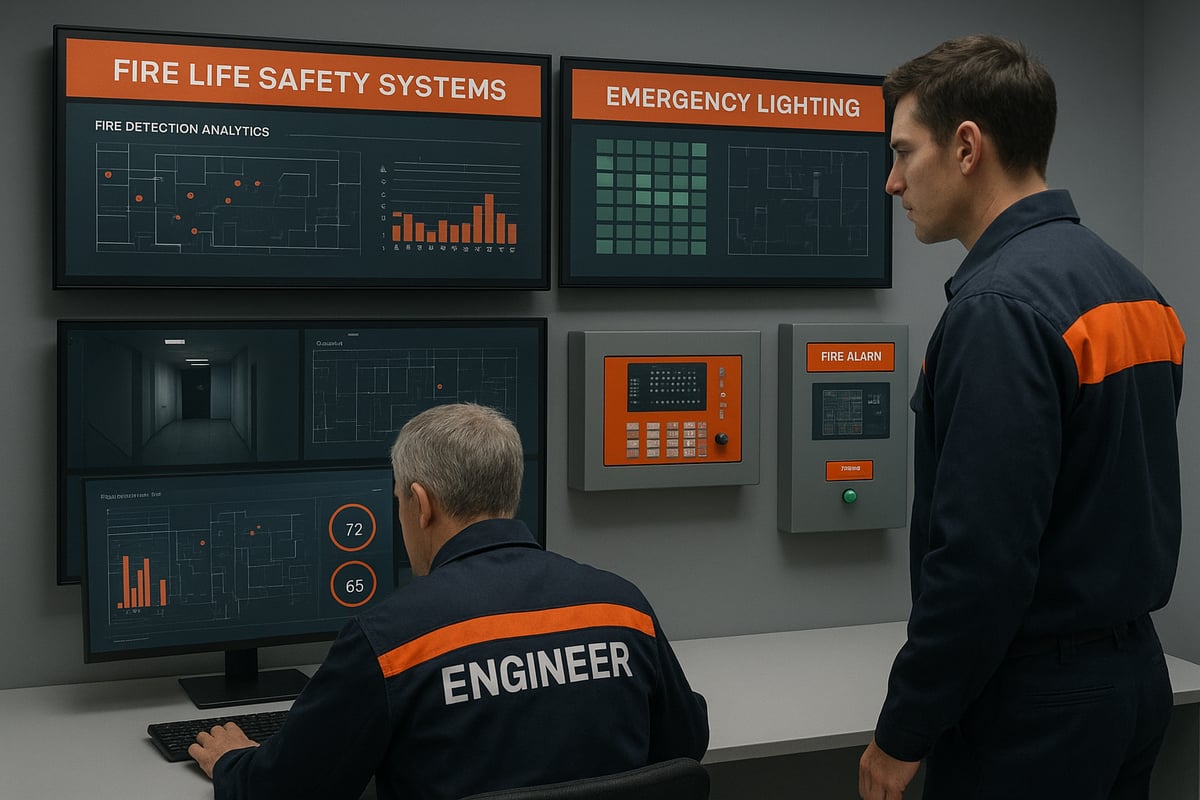
Smart and Connected Systems
Smart technology is transforming fire life safety systems by enabling real-time monitoring and control. IoT-enabled devices communicate seamlessly, allowing instant alerts, remote diagnostics, and predictive maintenance. These systems integrate with building management systems, streamlining operations and enhancing safety.
Building managers can now access detailed analytics, helping them identify risks and optimise system performance. For example, sensors can detect faults before they become critical, reducing downtime and unplanned costs.
Key benefits include:
- Faster incident response
- Reduced maintenance costs
- Improved regulatory compliance
Adopting connected fire life safety systems ensures your property remains protected and future-ready.
Video Smoke Detection and Advanced Sensors
Video smoke detection is advancing fire life safety systems, particularly in large, open spaces like warehouses or stadiums. These systems use video analytics to identify smoke patterns, offering earlier detection compared to traditional sensors.
Advanced multi-criteria sensors reduce false alarms by analysing heat, smoke, and even air composition. This technology enhances reliability and safety, especially in environments where standard detectors struggle.
Key advantages:
- Rapid identification of fire hazards
- Effective coverage of complex spaces
- Lower rates of nuisance alarms
By integrating these technologies, fire life safety systems become more effective and adaptable.
Digital Communication and PSTN Switchover
The UK’s move from analogue to digital phone lines by December 2025 affects fire life safety systems that rely on PSTN for alarm signalling. Legacy systems may fail if not upgraded, risking non-compliance and loss of monitoring.
To prepare, building owners must transition to digital alarm communication, ensuring uninterrupted alerts and remote monitoring. For a detailed overview, see the PSTN switchover impact on fire alarm systems.
Upgrading communication infrastructure is essential for the ongoing reliability of fire life safety systems and compliance with new UK standards.
Integration with Security and Access Control
Unified platforms now integrate fire life safety systems with security and access control, providing a holistic approach to building safety. Automated responses, such as unlocking evacuation routes and managing lockdowns, improve both safety and efficiency.
In critical facilities like hospitals or public buildings, these integrated systems streamline emergency procedures and reduce human error. The result is faster, more coordinated responses to incidents.
Benefits include:
- Centralised monitoring
- Enhanced compliance
- Reduced operational risk
Investing in integrated fire life safety systems ensures comprehensive protection for modern buildings.
Step-by-Step Guide: Implementing Fire Life Safety Systems in 2025
Ensuring your building is protected by effective fire life safety systems requires a structured, methodical approach. In 2025, compliance and tailored solutions are essential. This step-by-step guide will help you navigate each stage of the process, from initial assessment to final certification, ensuring your fire life safety systems provide reliable protection for people and property.
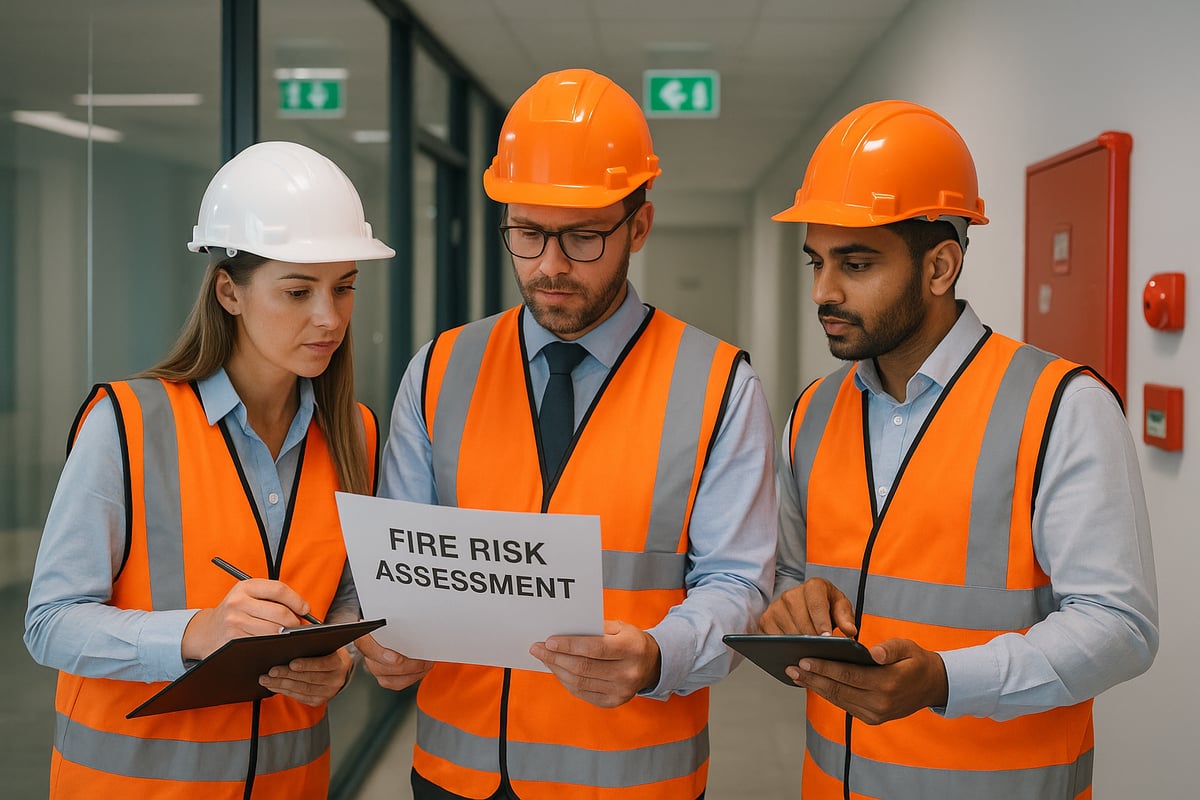
Step 1: Conduct a Comprehensive Fire Risk Assessment
The foundation of robust fire life safety systems is a detailed risk assessment. Identify hazards, assess vulnerable areas, and uncover any compliance gaps. Engaging a qualified professional ensures accuracy and adherence to current regulations. For a clear understanding of what this process involves, the Fire Risk Assessment Process offers a comprehensive overview. Proper assessment is not just best practice, it is a legal requirement and the first critical step in safeguarding your premises.
Step 2: System Design and Customisation
Designing fire life safety systems begins with understanding your building’s unique requirements. Consider its layout, size, occupancy, and existing infrastructure. Choose detection, alarm, and suppression technologies that align with these needs. Integrate new systems with current installations to maximise efficiency and compliance. Expert design ensures that fire life safety systems are not only compliant with 2025 standards but also offer optimal protection and adaptability for future needs.
Step 3: Professional Installation and Commissioning
Professional installation is essential for fire life safety systems to operate correctly. Certified installers follow all regulatory guidelines, ensuring every component is fitted and tested precisely. Commissioning involves rigorous testing of alarms, detectors, and suppression equipment to confirm full functionality. This process guarantees that fire life safety systems will perform as expected in an emergency, while also minimising disruption to daily business operations and maintaining continuous compliance.
Step 4: Staff Training and Emergency Planning
Once fire life safety systems are in place, staff must be trained to respond quickly and confidently during an emergency. Regular fire drills, clear evacuation procedures, and practical training on alarm response and extinguisher use are vital. Make special arrangements for vulnerable occupants, such as installing disabled refuge systems. Empowered and knowledgeable staff are key to ensuring fire life safety systems protect everyone effectively during a crisis.
Step 5: Documentation and Certification
Maintaining thorough documentation is a critical part of managing fire life safety systems. Keep detailed records of installation, testing, and ongoing maintenance. Obtain all necessary compliance certificates for insurance and legal purposes. Use logbooks to track fire alarm and emergency lighting checks. Accurate and up-to-date documentation not only demonstrates your commitment to safety but also ensures continued compliance with evolving regulations in 2025.
Maintenance, Testing, and Legal Responsibilities
Maintaining fire life safety systems in 2025 is not just a technical requirement, but a legal and moral obligation for every building owner or manager. Regular checks and timely upgrades ensure that fire life safety systems function properly when needed most, safeguarding both lives and property. Neglecting these responsibilities can result in severe legal consequences, insurance complications, and, most importantly, increased risk to occupants.
Importance of Regular Maintenance
Regular maintenance is the backbone of effective fire life safety systems. Without routine inspections, faults can go unnoticed, potentially leading to system failure during emergencies. UK fire safety law makes maintenance mandatory for all fire life safety systems, with significant penalties for non-compliance.
A well-maintained system offers peace of mind, knowing that alarms, detectors, and emergency lighting will operate as intended. Failure to maintain fire life safety systems can void insurance policies and result in fines, putting both safety and business continuity at risk. For detailed guidance on maintaining fire extinguishers, see the Fire Extinguisher Servicing Guide.
Routine Testing Schedules
Routine testing is essential to keep fire life safety systems in optimal working condition. Each component requires a specific schedule to ensure reliability. Fire alarms should be tested weekly, while emergency lighting demands monthly function checks and annual duration tests.
Sprinkler and suppression systems benefit from quarterly or annual inspections by certified professionals. The table below summarises key testing intervals:
| System Component | Test Frequency |
|---|---|
| Fire alarms | Weekly |
| Emergency lighting | Monthly/Annually |
| Sprinklers | Quarterly/Annually |
| Fire extinguishers | Annually |
Sticking to these routines ensures fire life safety systems remain compliant and ready for any incident.
Record-Keeping and Compliance
Accurate record-keeping is a legal requirement for fire life safety systems in the UK. All testing, maintenance, and repair activities must be logged, either in physical logbooks or digital records. These logs are crucial for demonstrating compliance during audits or inspections.
Digital solutions can simplify this process, offering automated reminders and secure storage. For emergency lighting, robust documentation is vital—visit Emergency Lighting Solutions for practical advice on compliance and system upgrades.
Keeping detailed records not only satisfies legal obligations but also helps identify patterns and potential issues before they escalate.
Upgrading and Retrofitting Older Systems
With regulations evolving in 2025, upgrading older fire life safety systems is essential for continued compliance. Assess legacy systems for compatibility with current standards, especially in light of the PSTN switchover and new British Standards.
Retrofitting may include updating alarm signalling equipment or replacing emergency lighting with energy-efficient LED technology. Building owners should also monitor regulatory changes, such as those affecting fire extinguishers, to ensure all fire life safety systems remain up to date.
Regular reviews and timely upgrades minimise risk, enhance reliability, and help future-proof your fire life safety systems for years to come.
Future Trends and Innovations in Fire Life Safety
Staying ahead of the curve is essential as fire life safety systems rapidly evolve to meet new challenges and opportunities. The future brings smarter, greener, and more inclusive solutions, ensuring protection keeps pace with modern risks and expectations.
AI and Predictive Analytics
Artificial intelligence is reshaping how fire life safety systems operate in 2025. AI-driven sensors analyse environmental data, enabling early fire detection and reducing false alarms. Predictive analytics monitor trends and trigger maintenance alerts before faults occur.
In smart buildings, these systems can automatically adjust configurations for changing risks, providing real-time diagnostics and optimising safety. As a result, fire life safety systems become more reliable and proactive, safeguarding both people and property. This shift supports business continuity and regulatory compliance.
Sustainability and Eco-Friendly Solutions
Environmental sustainability is now at the forefront of fire life safety systems. Energy-efficient emergency lighting and LED upgrades significantly reduce power consumption while maintaining compliance with green building standards.
A major change in 2025 is the shift to environmentally friendly extinguishing agents. The Fire extinguisher regulation changes 2025 ban certain foam extinguishers containing harmful chemicals and introduce European testing methods. This encourages building owners to upgrade to safer, greener alternatives, aligning fire life safety systems with broader sustainability goals.
Enhanced Accessibility and Inclusive Safety
Modern fire life safety systems are designed to protect everyone, including those with disabilities or sensory impairments. Enhanced features include disabled refuge areas, accessible evacuation routes, and alarms that combine voice instructions with visual alerts.
Legal requirements now mandate inclusive safety measures in all building types. By integrating these features, fire life safety systems ensure that no one is left behind during an emergency. This commitment to accessibility strengthens compliance and public trust.
Resilience Against Emerging Threats
Fire life safety systems in 2025 are engineered for resilience in multi-risk environments. They now integrate with disaster recovery and business continuity planning, offering coordinated responses to fire, flood, or power failure.
For example, critical infrastructure sites deploy fire life safety systems that communicate with security and energy management, ensuring rapid, effective action. This adaptability minimises downtime and supports ongoing operations, even under challenging conditions.
Industry Collaboration and Standardisation
Ongoing collaboration between manufacturers, installers, and regulators drives consistent improvements in fire life safety systems. Regular updates to British and international standards maintain system reliability and safety.
Choosing accredited providers is crucial for compliance and long-term performance. As the industry works together to raise the bar, building owners benefit from more robust, future-ready fire life safety systems.
As we’ve explored, staying ahead of new regulations and emerging technologies is crucial for protecting your building and the people inside. Whether you’re navigating compliance updates or looking to upgrade your fire life safety systems for 2025, having the right support makes all the difference. At Logic Fire and Security, we understand that every site has unique needs—and we’re here to help you make informed, confident decisions. If you’d like expert guidance tailored to your premises, why not Get a Free Site Survey? It’s a straightforward first step towards peace of mind and lasting compliance.


